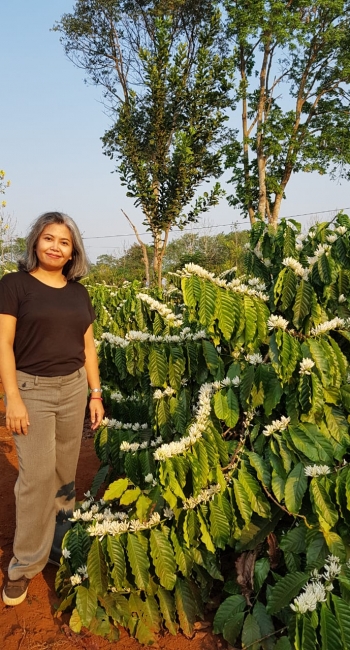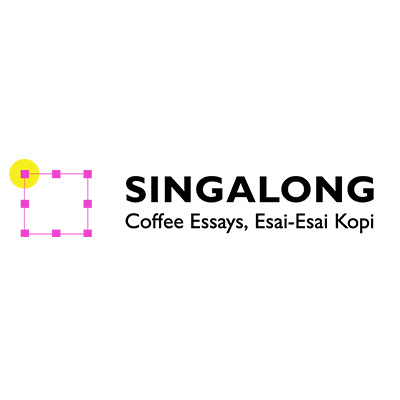Masa Depan Robusta Kita
MUSTIKA YULIANDRI
In the coffee industry, Robusta is like a celebrity who loses her popularity. But, it’s now rediscovered and brought under the wings of coffee experts, who are reinventing new ways for the beans to take over the center stage in our life again.
Robusta might have different meanings when we hear its stories as told by our grandparents. There is an image of steaming fragrant hot coffee poured into an enamel cup. It’s a cup of robusta that carries deliciousness without any precise size and formula that we now rely on.
Robusta now does move forward, even though it’s crawling. Slowly, and hopefully, surely. Several years ago, when the specialty industry took place and glorified the existence of Arabica coffee, Robusta suddenly disappeared. Robusta coffee is considered to be coffee of the past; bitter, monotonous and not as complex as arabica.
People choose Robusta only as a mix for house blends or as a budget trimmer at coffee shops because it’s cheap. In reality, robusta coffee sits on 1 million hectares of land in Indonesia, with yields of 601,000 tons / year, whereas arabica is only 0.30 hectares with yields reaching only 147,000 tons / year, according to Ministry of Industry data in 2017.
Who would have thought, Robusta is finally getting the attention from influential coffee groups. Then comes fine robusta, which is the best form of robusta coffee with cupping score above 80. True, if we carefully process, roast and brew robusta, just like how we treat specialty beans, it will reveal aroma and taste that are just as complex as specialty Arabica. For example, by only picking fruits that mature, avoiding over-fermentation and over-roasting.
One person who’s studying fine robusta is Mia Laksmi Handayani, also a certified r-grader. When the majority flock the Q-Grader classes, Mia takes on a different challenge.

Forecasting the Future of Robusta
“Robusta is no longer about the past generations, bad coffee, commercial coffee and old-fashioned way to drink coffee. Now, many can enjoy fine robusta as well,” Mia said proudly. What she said was true: fine robusta is increasing in popularity in Indonesia. Robusta coffee is no longer the second-class coffee or a side drink served with fried bananas.
There are many roasters who understand Robusta beans very well that they’re able to bring out the delicate flavors in the beans. Those who are in the processing sites should also give more care when it comes to sorting, so the end result in the cup is optimal.
Yet, fine robusta beans demand careful attention from the roasters, both domestic and foreign, who are already familiar with the qualities of the beans. According to Mia, there are many roasters who understand Robusta beans very well that they’re able to bring out the delicate flavors in the beans. Those who are in the processing sites should also give more care when it comes to sorting, so the end result in the cup is optimal.
On the other hand, many individuals are using fine robusta label to aim for higher price, even though the defects are unbearable. Despite this, the future of Robusta remains strong and promising.
I think our country’s potential is in the Robusta beans, considering that we produce more Robusta than Arabica.
Seeing a bright and long future for robusta in Indonesia, Mia is determined to take the R-grader license. “I think our country’s potential is in the Robusta beans, considering that we produce more Robusta than Arabica. Global warming will push Arabica planting further up the mountain, which will compete with the conservation area. Then, we are forced to choose Arabica beans with qualities like Robusta—for the sake of durability—but sacrifice Arabica’s distinctive character. Additionally, it’s harder for Indonesian Arabica coffee to compete with Arabica from African countries in terms of taste, or to compete with Latin America in terms of productivity. Meanwhile, only India currently giving serious attention to crafting fine robusta. If we focus with robusta now, we will have a great future. But we’re a bit late. Vietnam, Laos and the Philippines are already in the game. We have heavy competitors,” Mia said at length.
Global Warming and Robusta Industry in Indonesia
We all know that coffee plants are greatly affected by humidity and rainfall. Weather uncertainties and climate change can mess up any year’s harvests and change the flavors in a cup of coffee. It’s not a surprise that if the weather and climate are changing dramatically, you’ll get inconsistent cups of fine robusta coffee every year.

Despite the unpredictable weather, fine robusta still has a glimmer of hope if the demand increases. The increasing demand means that more processors are motivated to process their robusta as a specialty batch. Fine robusta will have a future. “Arabica coffee is getting more expensive lately. Roasters are trapped between high price of green beans and consumers who don’t want prices to increase. They then look at fine robusta as a cheaper alternative, but realize that it’s no less enjoyable than arabica,“ Mia said.
Mia added that in Indonesia, there are at least two farms which she considers the most consistent in producing fine robusta. First one is in West Lampung and the second is in Wonosobo. For Mia, Wonosobo produces an undeniable fine cup of fine robusta and also, her favorite farm to visit. "But, there is another fine robusta coffee that’s also so memorable for me. The coffee comes from Bali. During the Q-robusta calibration a few years ago, its average grade is between 88-99. A remarkably good score for robusta. Unfortunately, their harvest afterwards wasn’t as good as the previous crops. ”
Can Robusta Indonesia Compete in the Global Market?
Talking about fine robusta, especially about sorting and cupping tests, is one way to push the quality of the coffee. So far, fine robusta that’s around hasn’t represented the full potential of the bean. Not many understands that the ‘fine robusta’ label doesn’t always mean what it says. So how can we increase the selling price if the quality isn’t good?
Also, fine robusta should be included in the coffee auction held in Indonesia Specialty Microlot every year. Here, not only arabica specialties can present, but also fine robusta. Processors who are confident in their product should participate so consumers can learn what good fine robusta actually taste like.
If our fine robusta can show up at the auction with high results, it’s likely that it will be well-received in the global market as well. After all, any good coffee, no matter what it is and where it comes from, will always find its customers, right?
This paper also involves the results of interviews from Mia Laksmi Handayani, an Indonesian R-Grader.
MUSTIKA YULIANDRI loves to drink coffee and crafting sentences. To this second, she happily lives between spaces and words.



